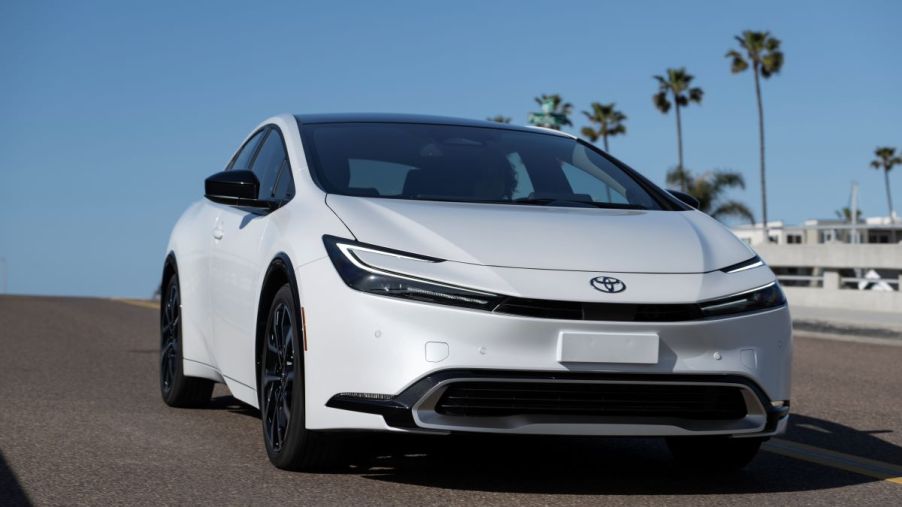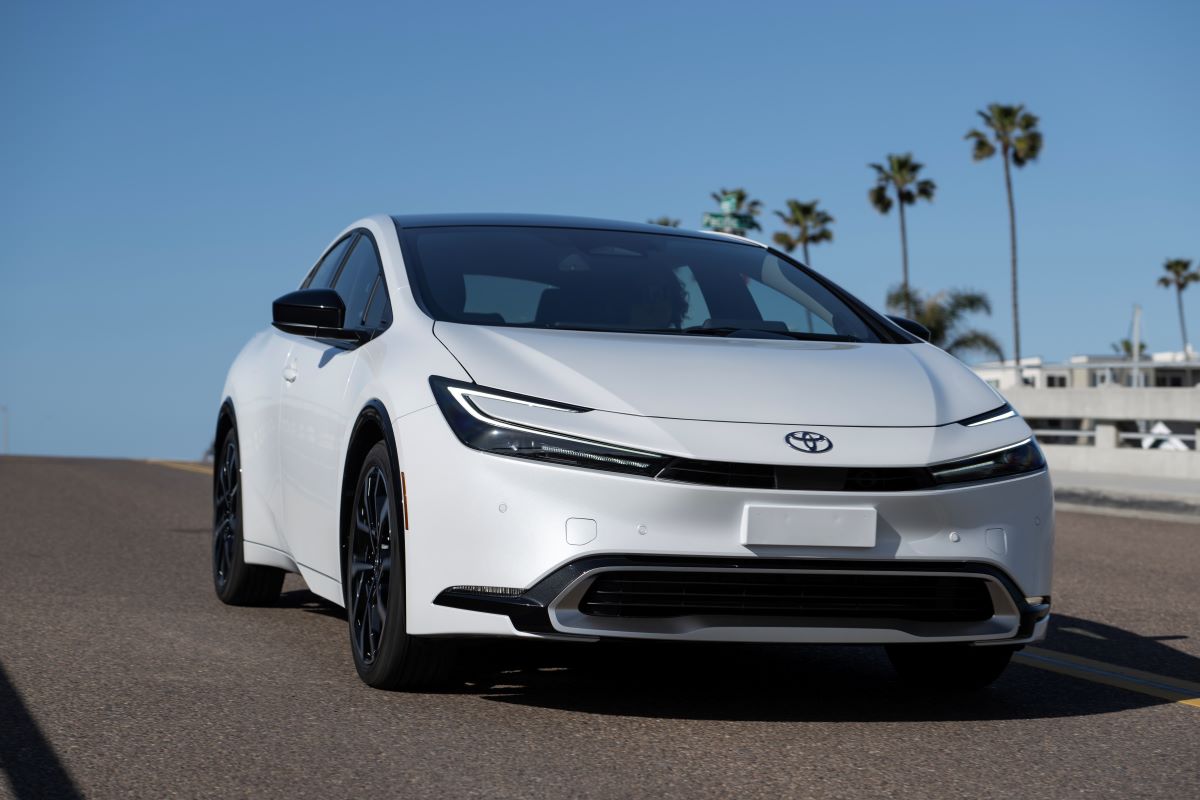
Is the 2023 Toyota Prius Prime Base Trim Level Enough, or Should You Spec It Up?
People can’t wait to get their hands on the all-new 2023 Toyota Prius Prime. With gorgeous styling, an increased all-electric range, and nearly double the horsepower, it’s hard to fault the PHEV (plug-in hybrid electric vehicle). But there is a challenge in choosing the one with the most value. Given the well-stocked base model, are the pricier trim levels badges of honor, or do they bring substance to the table?
What do you get in the base Prime SE?
Up front, potential buyers will see six-way adjustable driver and passenger seats overshadowed by a premium heated and synthetic leather-trimmed multifunctional, telescopic steering wheel. With cloth upholstery all around, the base SE features two cup holders, four bottle holders, and a whopping six USB-C ports.
A completely redesigned eight-inch touchscreen infotainment system replaces the predecessor’s tablet-like center stack. It boasts ease of use, six speakers, and the new Toyota Audio Multimedia system.
On the safety side, the base Prime features Toyota Safety Sense 3.0, hosting a plethora of welcome driver assistance. It includes automatic emergency braking, lane tracing assist, radar-guided cruise control, pedestrian detection, traffic jam assist (TJA), and more. The new Proactive Driving Assist (PDA) can also manage acceleration, braking, and steering in certain low-speed conditions. But is there anything in the pricier trim levels worth the extra MSRP?
Upsides for the mid-range and top-tier Prime

Not only do the XSE and XSE Premium gain a 12.3-inch infotainment system, but drivers can also access a wide array of over-the-air updates. Potential buyers can enjoy up-to-date search capabilities via Google’s Points-of-Interest data. Consequently, cloud navigation means Prime drivers can take advantage of the best map, traffic, and routing information in a modern car.
Both upper trim levels have access to an elegant, fixed glass roof. It’s standard on the XSE Premium but an option for the XSE. And only the XSE Premium gains an extra two speakers in its JBL Premium Audio system, which includes an amplifier. But either trim level offers two more cupholders than the base.
Drawbacks to the Prime XSE and XSE Premium
The 44-mile all-electric range in the 2023 Toyota Prius Prime is a bit short of what many had hoped, with a benchmark of 50 miles. While the PHEV sedan minorly misses the mark, the mid-range and top-tier models have less range than the base SE. Toyota says the manufactured-estimated all-electric driving range is 39 miles. Fuel economy takes a hit, too; 52 mpg combined in the SE and 48 mpg in the XSE and XSE Premium.
Another undernoted drawback is the Prius Prime’s wheels. Base SE Primes are fitted with 17-inch wheels, whereas the upper trim levels have 19-inchers. After the first 30,000 or so miles, owners will experience differences in the price of tires for each wheel size. It’ll be less expensive to replace a tire with a smaller wheel size, and the extra rubber means more comfort and less road noise.
How much is a 2023 Toyota Prius Prime?
On average, across the trim levels, the all-new Prime is roughly $5,000 more than last year’s. A base Prime SE has a starting MSRP of $32,350, and the mid-range XSE is $35,600. For the range-topping XSE Premium, MSRP starts at $39,170, per Toyota. Nevertheless, potential buyers must also add a $1,095 destination fee.
Unless an optional 185-watt solar roof or a fixed glass roof is wanted, maybe the base Prime is your bag. You may miss trying Cloud navigation, but you’re used to it now. Moreover, each trim level has TJA and PDA to make driving much easier. Luckily, there are no power upgrades, so even the base 2023 Toyota Prius Prime can hit 60 mph from a standstill in just 6.6 seconds.


